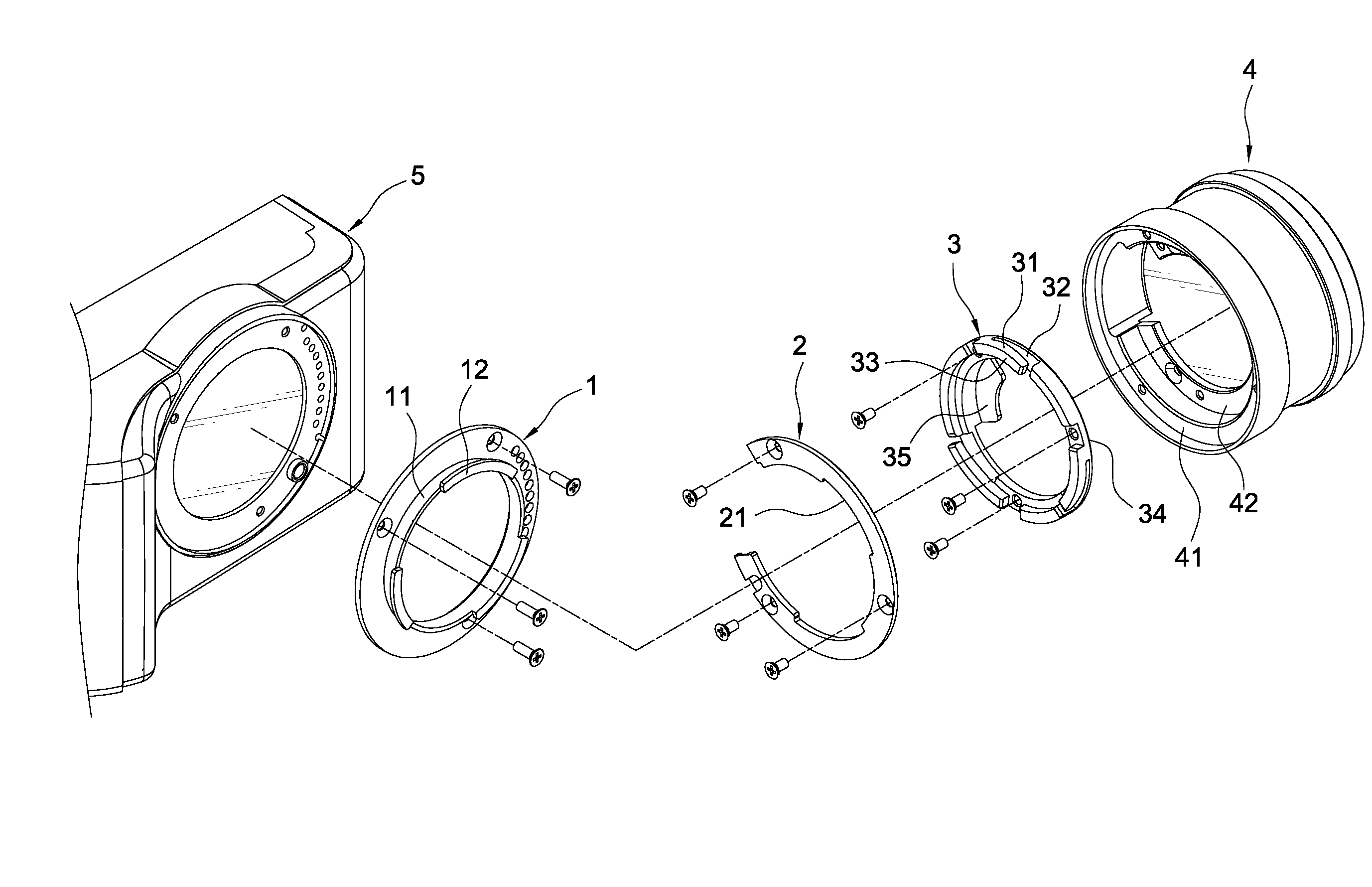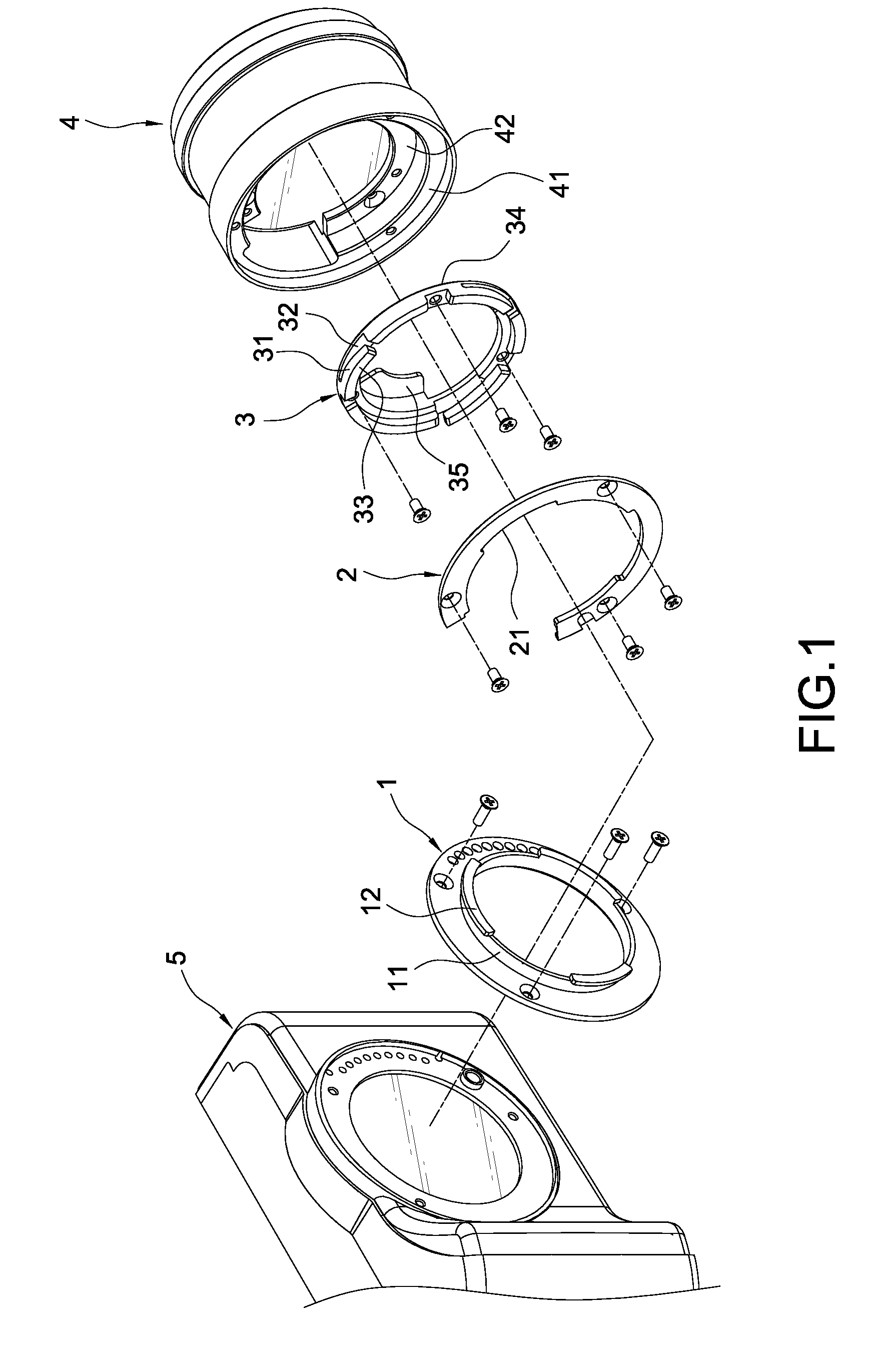Fixing structure for an auxiliary lens of cameras
a technology for fixing structures and auxiliary lenses, which is applied in the field of auxiliary lenses for compact cameras, can solve the problems of inability to provide a function of close-up photography or macro-photography, bulky and expensive slr, and operate well when being connected to the camera properly, so as to reduce manufacturing costs, enhance the tightness between the camera body and the auxiliary lens, and enhance the effect of tightness
- Summary
- Abstract
- Description
- Claims
- Application Information
AI Technical Summary
Benefits of technology
Problems solved by technology
Method used
Image
Examples
Embodiment Construction
[0019]Please refer to FIG. 1, which is an exploded perspective view showing a preferred embodiment of the present invention. The present invention includes a base 1, a lens mount 2 and an abutting base 3. In the present embodiment, the base 1 and the abutting base are annular. The lens mount 2 is a C-shaped ring having an opening as shown in FIG. 1. The lens mount 2 also can be a closed ring. Those skilled in this art will understand that the shape is not limited thereto, but can be changed according to the desired object. The dimension of the base 1 is corresponding to that of the lens of a camera body 5. The inner edge of the base 1 protrudes outwardly to form an annular wall 11. The top end of the annular wall 11 further protrudes outwardly to form a plurality of curved blocks 12. The inner and outer diameters of the lens mount 2 are approximately identical to those of the base 1, while the thickness of the lens mount 2 is approximately identical to the height of the annular wall...
PUM
 Login to View More
Login to View More Abstract
Description
Claims
Application Information
 Login to View More
Login to View More - R&D
- Intellectual Property
- Life Sciences
- Materials
- Tech Scout
- Unparalleled Data Quality
- Higher Quality Content
- 60% Fewer Hallucinations
Browse by: Latest US Patents, China's latest patents, Technical Efficacy Thesaurus, Application Domain, Technology Topic, Popular Technical Reports.
© 2025 PatSnap. All rights reserved.Legal|Privacy policy|Modern Slavery Act Transparency Statement|Sitemap|About US| Contact US: help@patsnap.com



